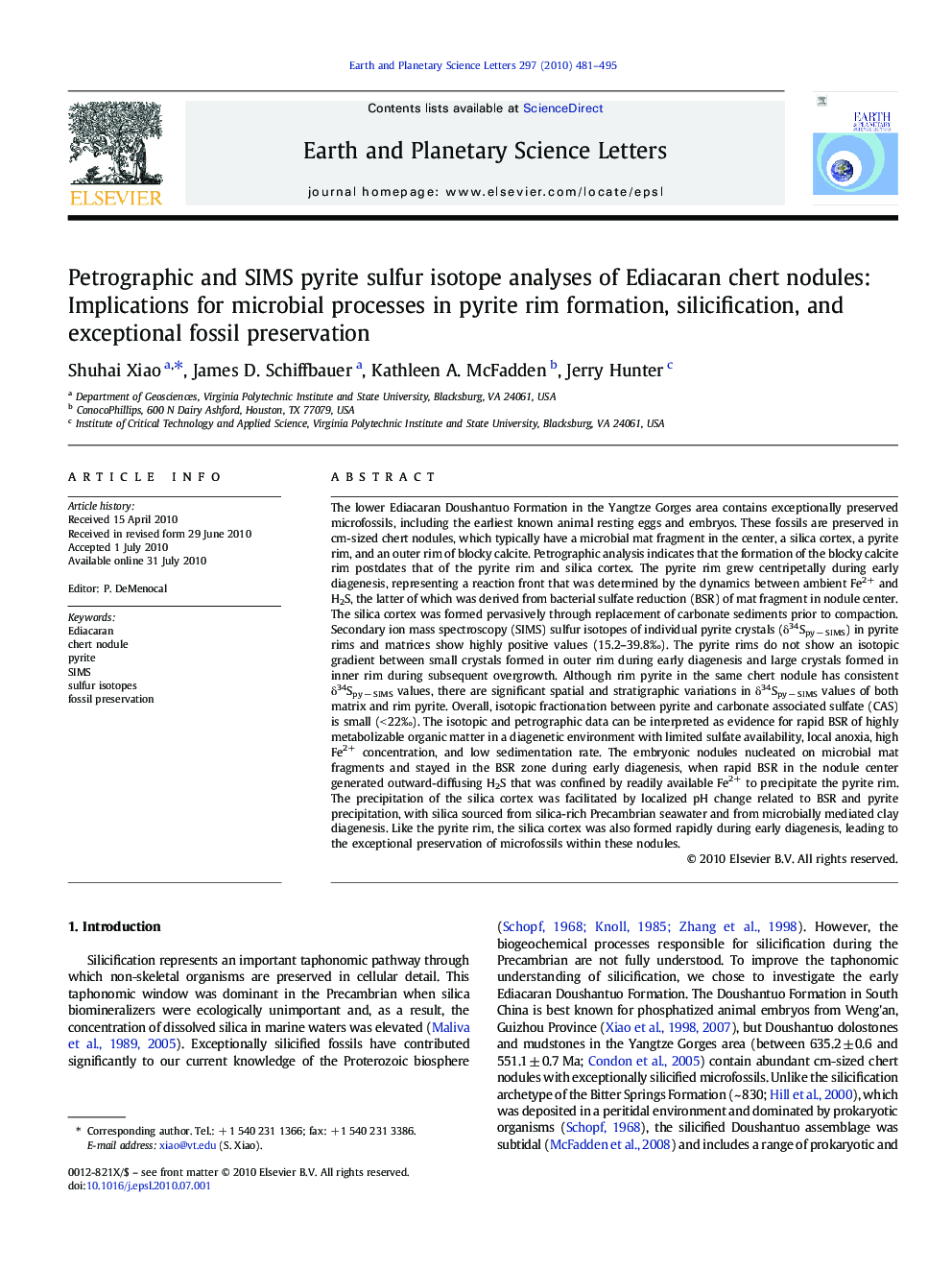| کد مقاله | کد نشریه | سال انتشار | مقاله انگلیسی | نسخه تمام متن |
|---|---|---|---|---|
| 4678377 | 1634845 | 2010 | 15 صفحه PDF | دانلود رایگان |

The lower Ediacaran Doushantuo Formation in the Yangtze Gorges area contains exceptionally preserved microfossils, including the earliest known animal resting eggs and embryos. These fossils are preserved in cm-sized chert nodules, which typically have a microbial mat fragment in the center, a silica cortex, a pyrite rim, and an outer rim of blocky calcite. Petrographic analysis indicates that the formation of the blocky calcite rim postdates that of the pyrite rim and silica cortex. The pyrite rim grew centripetally during early diagenesis, representing a reaction front that was determined by the dynamics between ambient Fe2+ and H2S, the latter of which was derived from bacterial sulfate reduction (BSR) of mat fragment in nodule center. The silica cortex was formed pervasively through replacement of carbonate sediments prior to compaction.Secondary ion mass spectroscopy (SIMS) sulfur isotopes of individual pyrite crystals (δ34Spy − SIMS) in pyrite rims and matrices show highly positive values (15.2–39.8‰). The pyrite rims do not show an isotopic gradient between small crystals formed in outer rim during early diagenesis and large crystals formed in inner rim during subsequent overgrowth. Although rim pyrite in the same chert nodule has consistent δ34Spy − SIMS values, there are significant spatial and stratigraphic variations in δ34Spy − SIMS values of both matrix and rim pyrite. Overall, isotopic fractionation between pyrite and carbonate associated sulfate (CAS) is small (< 22‰). The isotopic and petrographic data can be interpreted as evidence for rapid BSR of highly metabolizable organic matter in a diagenetic environment with limited sulfate availability, local anoxia, high Fe2+ concentration, and low sedimentation rate. The embryonic nodules nucleated on microbial mat fragments and stayed in the BSR zone during early diagenesis, when rapid BSR in the nodule center generated outward-diffusing H2S that was confined by readily available Fe2+ to precipitate the pyrite rim. The precipitation of the silica cortex was facilitated by localized pH change related to BSR and pyrite precipitation, with silica sourced from silica-rich Precambrian seawater and from microbially mediated clay diagenesis. Like the pyrite rim, the silica cortex was also formed rapidly during early diagenesis, leading to the exceptional preservation of microfossils within these nodules.
Journal: Earth and Planetary Science Letters - Volume 297, Issues 3–4, 1 September 2010, Pages 481–495